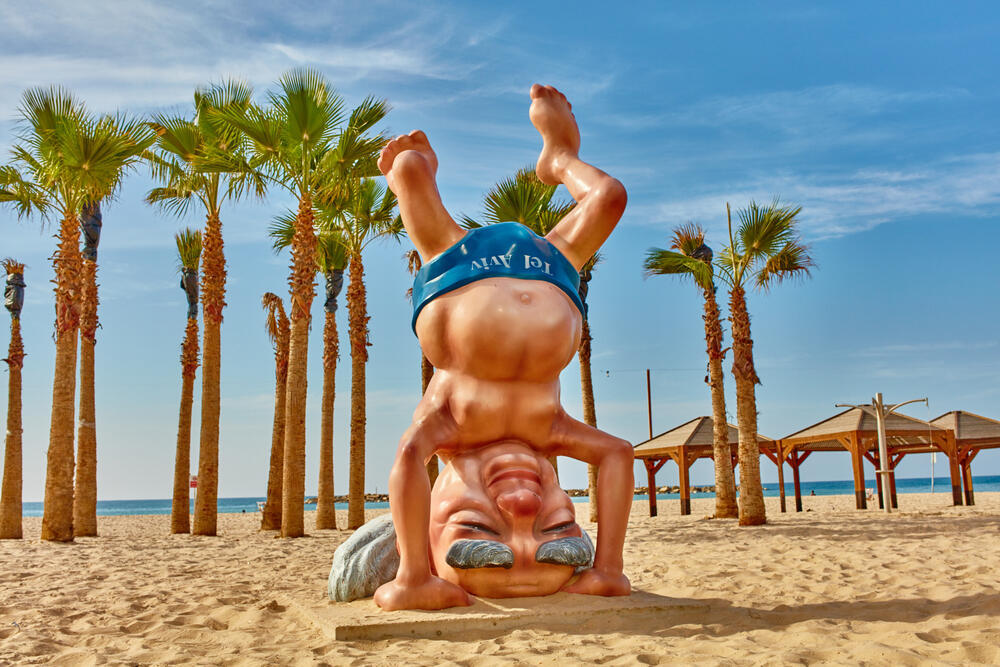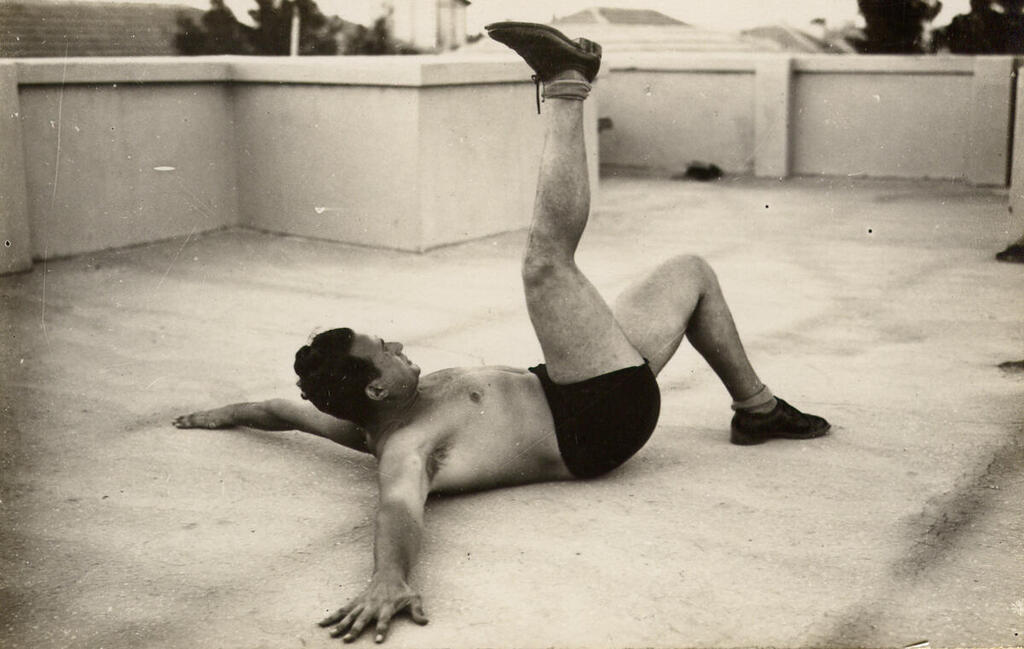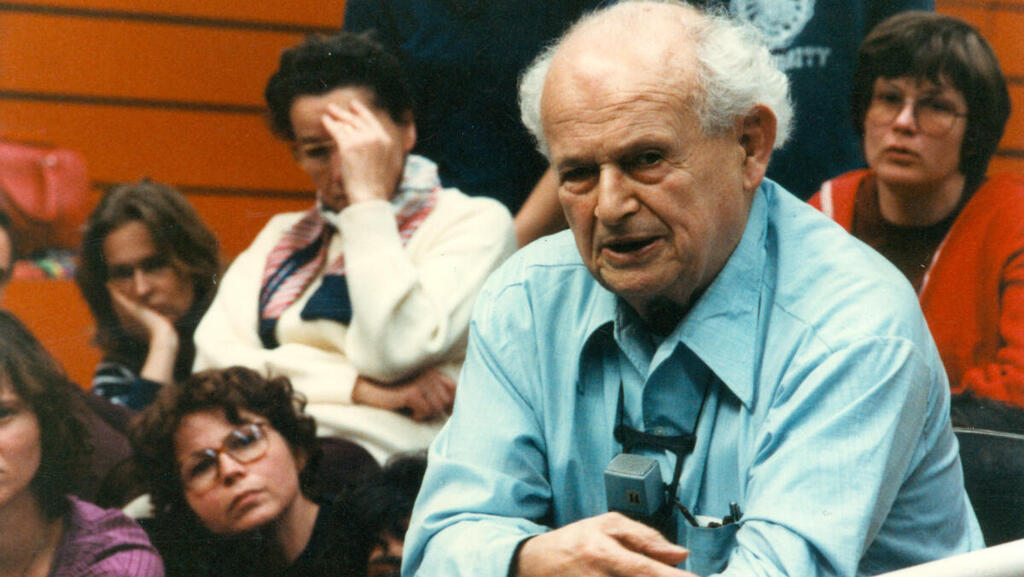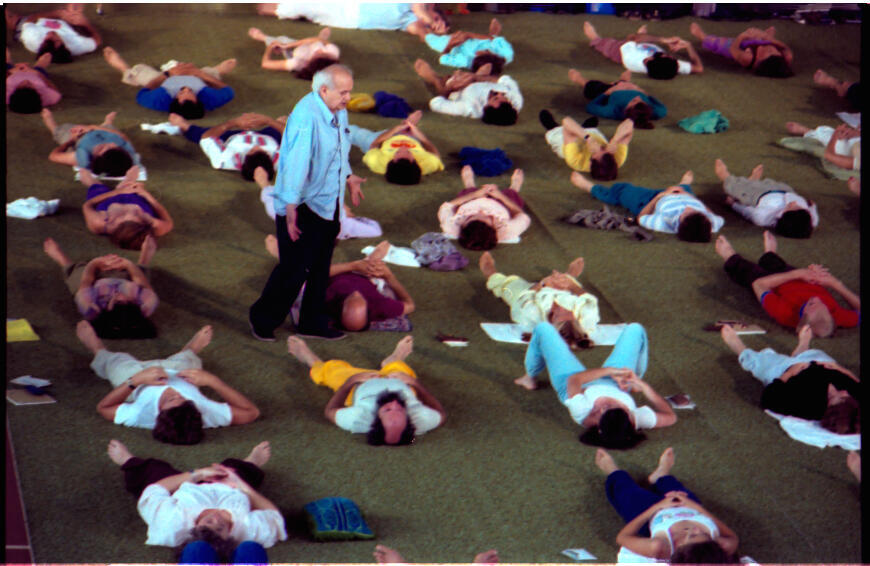On Israel’s recent Independence Day, the State Archives published an exceptional letter that arrived at the office of then-Prime Minister David Ben-Gurion in 1957.
More Stories:
The writer was Jack Yaakov Cohen, a resident of Tel Aviv who presented himself as a professional masseur and offered to treat Ben-Gurion and help him relieve the frequent back pain he suffered from.
It’s unknown if Ben-Gurion ever accepted the offer, but it’s known that at the time Ben-Gurion was already treating his back pain using Dr. Moshe Feldenkrais's method.
In the summer of 1957, Ben-Gurion was first documented standing on his head, and it’s known he was able to achieve this thanks to the method of Feldenkrais, who worked with Israel’s first prime minister regularly.
He praised Feldenkrais on various occasions, saying he "knows his work well" and "understands anatomy better than any doctor I’ve met in my life." Ben-Gurion also said, "Before the Sinai War, I suffered from lumbago (acute lower back pain), and he cured me."
"Why did I make him stand on his head? The whole world opposed it," Feldenkrais recounted. "But I told Ben-Gurion, 'Look, you have a small body. You’ve never been proud of your body, so you neglected it in your youth. Therefore, I want you to do something that, you believe you can’t do at all, what is that?'”
“Ben Gurion replied, 'A headstand.' So I tell him, 'You’ll do a handstand, and you’ll see that you’ll do it better than most.' After managing a handstand, he was ecstatic,'” the doctor said.
Feldenkrais was born in Ukraine in 1904 and arrived in Israel when he was 13. In his 20s he traveled to France and studied physics at Sorbonne University. He worked as a scientist in various fields and simultaneously practiced judo, eventually reaching a black belt.
He published his doctoral thesis in physics in Britain, where he also suffered a severe knee injury during a football game. Doctors recommended surgery, but Feldenkrais refused and taught himself to walk differently.
This sparked his interest in anatomy, physiology and the connections between the brain, nervous system and motor functions, leading him to develop his method.
He published his method in several books that were translated into many languages, and then certified 13 students as his method’s instructors. Feldenkrais died in 1984, but his method still lives on and exists thanks to approximately 1,000 instructors worldwide who continue to teach it.
"Ben-Gurion suffered from severe back pain, but it didn’t stand in the way of his duties," says Aurora Lattarulo, the manager of the Ben-Gurion House’s Conservation Department in Tel Aviv.
"In 1951, he arrived at the White House for a meeting with President Truman with a walking stick. The event was documented in the global media, and as a result Feldenkrais wrote him a letter and offered his assistance.”
“Ben-Gurion showed the letter to his doctors, who dismissed it,” she added. “Feldenkrais was already a well-known therapist at the time, but the medical world didn’t take him seriously. Five years later Professor Aharon Katzir, one of Israel's top scientists, recommended him to Ben-Gurion, who then met with Feldenkrais, and his treatment helped him get rid of his back pain.”
According to the Feldenkrais method, the body is a means of communication with the brain and so, when the body gains strength, so will the brain.
"The method is based on science, but it also allows space for observation and personal experiences," says Eitan Sarig, a 66-year-old Feldenkrais method instructor and former chairman of the International Feldenkrais Federation (IFF) in Israel.
"The treatment is performed slowly because only through slow motions can we listen to the patient’s breathing, and see how air is inhaled and exhaled. We also do a lot of repeating movement, and self-observation skills are required."
Sarig says that people experience amazing results. "It's touching to see what Feldenkrais does for people. One of my students recently told me, 'My Feldenkrais lessons taught me to better understand my Pilates lessons.' I don’t find that surprising.”
“Feldenkrais thought it was important to look at the person, not only their symptoms,” he added. “The practitioner examines what the client does on a day-to-day basis, how they speak, and what their body language is.”
According to Sarig, the method helps people of all ages. "Infants with developmental disorders and children with symptoms of cerebral palsy or emotional difficulties came to see me. Once, I treated a group that included a five-year-old child with low self-esteem, who would always stare at the ground.”
“During treatment, we accepted him and gave him the room he needed. A year after starting the treatment, we saw a completely different child sitting with us in the circle: upright, looking at the group members, and unafraid to speak his mind. His self-esteem had changed,” he said.





